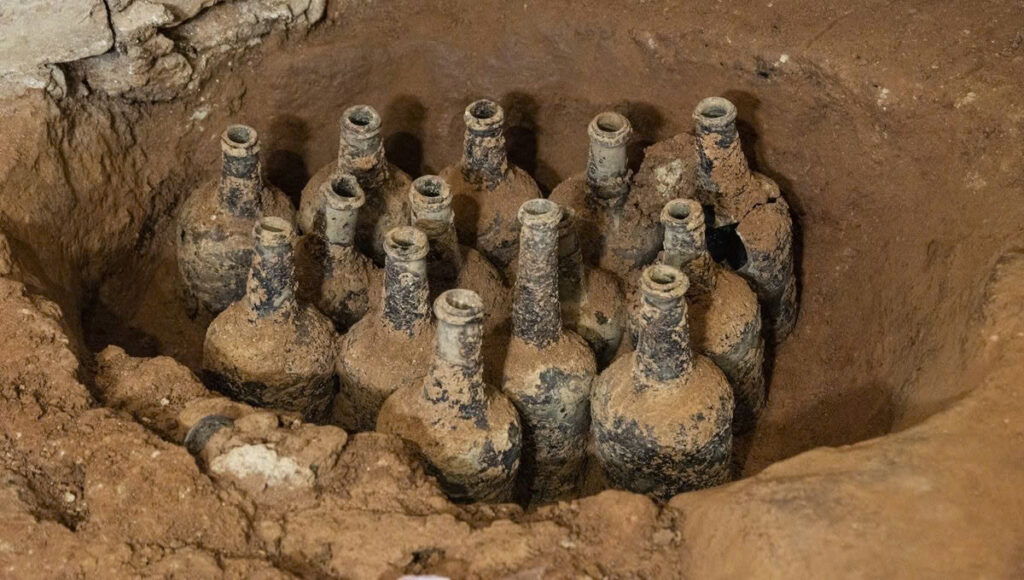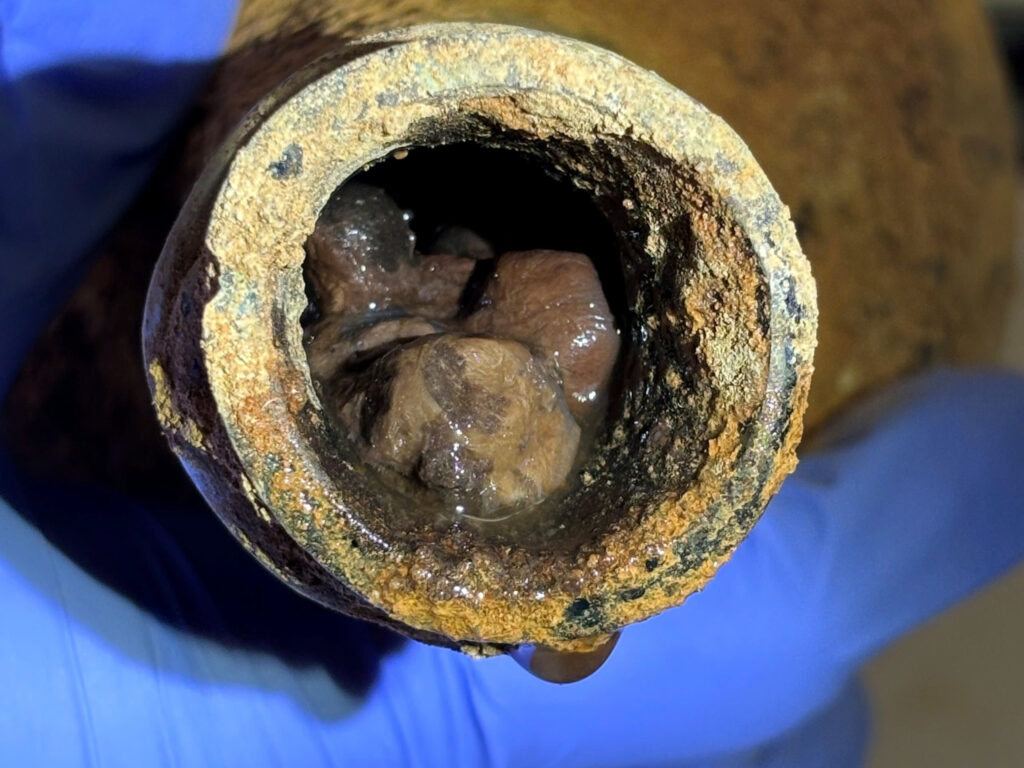Beneath the historic floors of Mount Vernon, archaeologists have made a remarkable discovery that offers an extraordinary glimpse into colonial American life. During recent restoration work, researchers uncovered nearly three dozen glass bottles containing perfectly preserved cherries and berries—fruits that have remained untouched for over two and a half centuries.
The Discovery That Changed Everything
A Routine Excavation Turns Extraordinary

What began as standard archaeological work for the Mansion Revitalization Project quickly transformed into something extraordinary. In May 2024, excavation teams working in Mount Vernon’s cellar made their first breakthrough: two intact 18th-century bottles filled with liquid, whole cherries, and pits. This initial find was just the beginning of what would become one of the most significant archaeological discoveries at the historic estate.
The team’s persistence paid off as they continued their careful excavation, ultimately uncovering 35 additional glass bottles hidden in the cellar’s storage pits. Of these remarkable finds, 29 bottles remained completely intact, still containing their precious cargo of preserved fruit that had been sealed away since before the American Revolution.
Painstaking Preservation Efforts
The delicate nature of these centuries-old artifacts required extraordinary care during extraction. Each bottle represented not just a historical artifact, but a time capsule containing organic materials that could easily be damaged or destroyed. The archaeological team worked methodically, ensuring that every bottle was carefully removed and documented before being transported for further analysis.
Unlocking Secrets of the Past
Scientific Investigation Reveals Ancient Techniques

Collaborating with the United States Department of Agriculture’s Agricultural Research Service, Mount Vernon’s research team has begun the fascinating process of analyzing these preserved fruits. Their preliminary findings have already revealed compelling details about 18th-century food preservation methods.
The scientific analysis has identified 54 cherry pits, 23 stems, and cherry pulp from what appears to be a more acidic variety of fruit—a characteristic that likely contributed to their remarkable preservation. Additionally, researchers have discovered berries believed to be gooseberries or currants, expanding our understanding of the variety of foods preserved at the estate.
The Promise of DNA Analysis
Perhaps most exciting is the potential for DNA testing to identify the exact species of cherries found in these bottles. Scientists are hopeful that despite the challenges posed by waterlogged conditions, some of the pits might eventually be cultivated, potentially bringing these historic fruit varieties back to life after more than two centuries.
A Window into Colonial Life
Masterful Harvesting Techniques

Microscopic examination of the preserved cherries has revealed fascinating insights into colonial harvesting methods. The fruits show evidence of being carefully cut from trees using shears, with stems deliberately left intact—a technique that demonstrates the thoughtful and skilled approach to food preparation during this era.
According to Jason Boroughs, Principal Archaeologist at Mount Vernon, these discoveries represent “an exceptionally rare opportunity to better understand 18th-century environments, plantation foodways, and the origins of American cuisine.”
Honoring Forgotten Expertise

The discovery serves as a powerful reminder of the skilled enslaved individuals who managed food preparation at Mount Vernon. These bottles represent their expertise and knowledge, including the work of Doll, the cook who came to Mount Vernon with Martha Washington in 1759 and supervised the estate’s kitchen operations.
Doug Bradburn, President and CEO of Mount Vernon, emphasizes the historical significance: “These artifacts likely haven’t seen daylight since before the American Revolution, possibly forgotten when George Washington departed Mount Vernon to command the Continental Army.”
Video
The Legacy Lives On
Bridging Past and Present
This extraordinary discovery does more than simply preserve fruit—it preserves stories, techniques, and the skilled hands that made such preservation possible. While these delicacies were likely reserved for the estate’s owners, the bottles themselves tell a broader story of ingenuity, skill, and the daily realities of colonial American life.
Continuing Research

As investigations continue, these remarkable artifacts promise to enhance our understanding of early American history and the foundations of American culinary traditions. Each bottle represents not just preserved fruit, but preserved knowledge—offering modern researchers invaluable insights into a world that existed over 250 years ago.
The Mount Vernon discovery stands as a testament to both the archaeological potential that still exists at America’s historic sites and the enduring legacy of those whose skilled hands shaped the daily life of our nation’s founding era.

